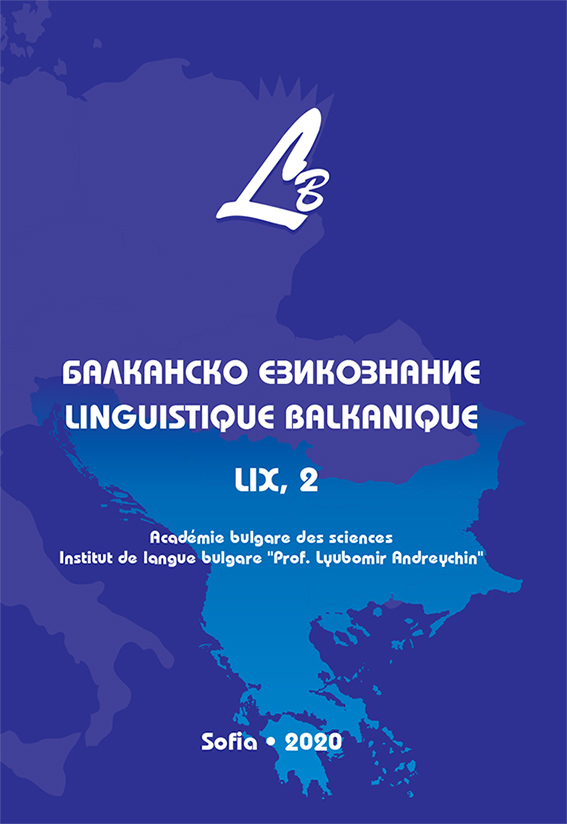ДВУЯЗЫЧИЕ ВЛАХОВ СЕРБИИ: АНАЛИЗ СПОНТАННОГО ПОЛИЛОГА НА L1
BILINGUALISM OF THE VLACHS OF EASTERN SERBIA: ANALYSIS OF A SPONTANEOUS POLYLOGUE IN L1
Author(s): Daria KonerSubject(s): Language studies, Language and Literature Studies, Theoretical Linguistics, Comparative Linguistics, Sociolinguistics, South Slavic Languages
Published by: Институт за български език „Проф. Любомир Андрейчин“, Българска академия на науките
Keywords: Timok Romanian; Vlachs of Eastern Serbia; bilingualism; polylogue; lexical interference; field research
Summary/Abstract: The article “Bilingualism of the Vlachs of Eastern Serbia: an analysis of the spontaneous polylogue in L1” focuses on one of the most numerous ethnic minorities of the Balkan Peninsula – the Serbian Vlachs, or Timok Romanians. All members of this community are bilingual, fluent in Serbian and Romanian, with different competencies depending on one’s age and linguistic background. Based on our own field data, we are considering the little-studied issue of the types and intensity of lexical interference produced by the national majority language upon one of the Vlach vernaculars, i. e. the dialect of the village of Kobishnitsa, a suburb of the Negotin town in Eastern Serbia. For these purposes, we analyze a conversation (a polylogue) between three local elderly women, which took place without the researcher’s intervention. The transcript contains samples of the authentic Timok Romanian speech, as it functions nowadays among local representatives of middle and older generation. It is stated that the interference of the Serbian language manifests itself primarily in the vocabulary, as: a) borrowings and singleword insertions of different degrees of morphological adaptation; b) multiword insertions, most of which (19 of 21), however, are contextually motivated sentences (set phrases and quotes, usually belonging to children), which are not „pure“ code switches. We come to the conclusion that despite the threat to the survival of the analyzed vernacular associated with problems of its transmission to the younger generation, Timok Romanian still retains its structure at all linguistic levels. The article also draws a conclusion about the dialectal attribution of the studied vernacular, which goes back to the Wallachian dialect area, but also possesses some typical Banat features in the field of phonetics. Contrary to the idea of the „Vlach language’s” remoteness from the Daco-Romanian continuum, which is spreading among Vlachs, we affirm that it is almost completely mutually intelligible with the standard Romanian.
Journal: Балканско езикознание / Linguistique balkanique
- Issue Year: 59/2020
- Issue No: 2
- Page Range: 300-322
- Page Count: 23
- Language: Russian
- Content File-PDF

